Antarctica is a global common over which no country has territorial rights. The ocean surrounding the frozen continent teems with life. Fishing here is managed by a strong international convention based on good science and communication. But the Antarctic seas now face unprecedented pressures from climate change and ocean acidification. As a newcomer to the convention, what is China’s interest in the marine life of this icy wilderness?
Guests
- Liu Nengye, University of Adelaide
- Cassandra Brooks, University of Colorado Boulder
- David Bowden, Matt Pinkerton, National Institute of Water and Atmospheric Research (NIWA)
- Zhou Wei, Frida Bengtsson, Greenpeace
- Jiliang Chen, Greenovation Hub
More from this series
Podcast: China as a 'near-Arctic' state
Transcript
Marcy Trent Long: Welcome to China’s Polar Frontiers, a podcast by Sustainable Asia.
My name is Marcy Trent Long.
In our last season, we visited the depths of the ocean in pursuit of the mineral wealth that could fuel a renewable energy revolution. This time, we’re heading to the polar extremes of our planet: the icy expanses of the Arctic and the Antarctic. The 20th century was the age of polar exploration, and superpowers like the United Kingdom, France and Russia laid claim to parts of the poles. During the second half of the century, organisations were established to maintain peace and order, and protect these pristine, frozen worlds. But over the last 20 years, new players have asserted their claims on this ice-covered territory, including China.
After decades of internal strife and isolationism, China has taken its place as a global leader, driving a hard bargain in negotiations over resource extraction and conservation. Now, with the landscape of the polar regions changing drastically with warming temperatures, China seeks to protect its interests in this new frontier. Why is China so interested in the poles? We begin in Antarctica.
On the 7th of November 2019, China’s first homemade icebreaker set off for Antarctica. Xuelong 2, or Snow Dragon 2, will join its Ukrainian-built sister ship, Xuelong, for China’s 36th Antarctic scientific research mission. They’ll meet at Zhongshan Station in Antarctica, a Chinese research station constructed in 1989 just four years after China’s first Antarctic research station, Great Wall.
So why all this activity in the Antarctic? And why is China, a country solidly in the northern hemisphere, interested in the barren lands of this southernmost continent? That’s a question for Dr Liu Nengye, a senior lecturer at the University of Adelaide, Australia and a leading authority on China’s activities in the polar regions.
Liu Nengye: China is a major player in this world. So I think the same question can be asked [about] why the United States is interested in Antarctica, or why the European Union is interested in Antarctica. I mean, of course there are different reasons, but I think they all look at the same thing, which is the future.
Marcy: The future. Antarctica is a land full of resources. China, like any other country with the capacity for long-term planning, knows it needs to be in the room where decisions will be made about these resources. For the Antarctic, that room is managed by the Antarctic Treaty System.
The Antarctic Treaty was originally signed in the 1950s by 12 countries who were then active in the Antarctic.
Liu: The human history of exploring Antarctica started from the 18th, 19th century, especially during the so-called heroic Antarctic expeditions era. This [was] actually part of the climax of the so-called colonialism [of] western powers. People from western countries, they travelled around the world trying to look for new territories and resources, and so they go to Africa… so Antarctica was no exception.
While for China, [during] most of the 20th century, China has been quite inward-looking, because China has been through a lot of internal issues: the Civil War, the Communist Revolution, all sorts of things… the Japanese invasion. So for a long time China had no interest [or] capacity to get involved in issues that were far away, such as Antarctica. So China only started participating in Antarctic affairs in the 1980s. So after the open door, China started reconnecting with the rest of the world. And after 30-40 years of soaring development, the Chinese presence in Antarctica has also been expanding, which is once again reflecting the growing Chinese economy and Chinese interests in the whole world, including Antarctica.
Marcy: The Antarctic Treaty prohibits any military or mining activity in the region, but it does allow for the management of the Antarctic fisheries, or so-called “marine living resources”. Many countries, including China, are eyeing the abundance of marine life in the Antarctic waters. To learn more about the species we can find there, I spoke with Dr Cassandra Brooks, assistant professor at the University of Colorado Boulder and a member of the Scientific Committee on Antarctic Research.
Cassandra Brooks: If you go to the Antarctic peninsula, you will be on this vessel and literally there will be whales going by constantly feeding on krill. And that is humpback whales, minke whales, you’ll see orcas as well. You’ll see heaps and heaps of penguins. Penguins go by just jumping out of the water while they’re travelling or while they’re feeding. You will see seals. Seals will both be resting on the ice, any ice flows that you see will be covered in seals, as well as they’ll be travelling through the water. I think for me that was the most surprising thing, is that I had seen plenty of ocean areas that were rich with life, but to see Antarctica, where it’s literally the coldest continent, it’s the windiest place, it’s extremely dry on land, and then the water is below the point of freezing, so it’s extremely cold, but to know that it’s full of life. And animals just have the most amazing adaptations. The fish have antifreeze in their blood. Some of the fish underwater have no haemoglobin, so no red blood cells, so their bodies are clear. It’s just an absolutely fascinating place to work as a biologist, because there’s so much life and there’s such a diversity of life and abundance of it.
Marcy: One of the central species in this rich ecosystem is krill. To the untrained eye these look like small shrimp, but they swarm together in massive, dense schools of up to 30,000 per cubic metre.
Cassandra: Krill are the key prey species in the Southern ocean, almost everything eats krill. So it is a critical piece of the ecosystem.
Marcy: They’re eaten by whales, seals, penguins, squid… you name it. Dr David Bowden can tell us more. He’s a marine ecologist at NIWA, the National Institute of Water and Atmospheric Research based in New Zealand.
David Bowden: Krill is one of the main mesopelagics, so mid-food level organisms in the Antarctic. So in the water column, rather than finding lots of different kinds of fish there – small fish that things prey on – a lot of the biomass is krill. And a lot of the biomass is something called silverfish. So those two organisms between them are a key link in the trophic web. So if you go between the stuff that’s happening in plankton and the growth of the real base of the food web, and the big whales and the charismatic fauna that we see at the top, the thing that’s linking them is the krill and the silverfish.
Marcy: So these tiny creatures are critical to the Antarctic food web, but like many marine animals in the frozen world, they’re threatened by climate change.
David: Krill have a life history in which their larval phase, the juvenile larval phase, is dependent on sea ice. So it’s like a nursery under the sea ice, they feed on the algae growing under the ice. And then when they’re adult, they’re free swimming in the water, and the ice is less of an essential habitat for them. But one of the scenarios that is quite possible in the future is that, as we lose sea ice through the year, it’s quite likely that we lose the krill as well. And if we lose the krill, then we lose the higher predators too, so the adelie penguins, the crabeater seals, the whales that are feeding on the krill. It’s quite likely, I would say, that we’re looking at knock-on effects there as a direct consequence of ice loss.
Marcy: The Antarctic is heating up five times faster than the rest of the world, which threatens keystone species like krill and the animals that depend on them, and not just because the water is getting warmer.
David: There’s also the other side of global warming, or climate change, which is the acidification of the ocean. So as we get more carbon dioxide in the atmosphere, a lot of that is absorbed into the oceans. And it has the effect of increasing the acidity or reducing the alkalinity of the ocean. And again, where you have organisms in the sea that have evolved under a stable state, with certain conditions of pH (that’s acidity) and temperature, if you change both of those things at the same time, and potentially quite rapidly, there’s, some would say, a strong chance that the communities will crash. They will not be able to make the change.
Marcy: Scientists are working hard to get a better picture of the impact of a warmer Antarctic on global ocean currents and the marine food chain, but in the meantime, fishing nations like Norway, South Korea and China see the large populations of Antarctic krill as an excellent source of feedstock for their fish farms.
We spoke about China’s coastal overfishing problem in our season three, called 1986. Because China’s coastal waters are nearly emptied of fish, the country is investing heavily in marine ranching and aquaculture. To feed these farmed fish, they need a lot of protein from either trash fish – the small fry that fishermen can’t sell on the market – or they could use krill. Zhou Wei of Greenpeace.
Zhou Wei: In the Antarctic, if you look at the number of krill, it seems like that area has not been fully developed yet. So, many fishing vessels come to the Antarctic to fish this area. But the way we evaluate whether or not this area is overfished is still done by only looking at that single species. We’re not taking into account the entire ecosystem. So if we consider the impact that climate change already has on their habitats, the fishing industry could be adding pressure to the survival of these Antarctic species.
Marcy: Given all these pressures on the Southern ocean, it’s more important than ever to sustainably manage the fishing that goes on there. Fortunately, the Convention for the Conservation of Antarctic Marine Living Resources, commonly known as CCAMLR, was put into place in the 80s. We’ll talk about that after this short break.
Break to thank sponsors.
Jiliang Chen: CCAMLR is an institution that protects marine living resources in Antarctica through fisheries management.
Marcy: That’s Jiliang Chen, a researcher with Chinese NGO Greenovation Hub. Jiliang is an observer to the annual CCAMLR meetings.
Jiliang: There are several types of human activities in that part of the ocean. There’s the fishing industry, tourism, scientific research and transport. So the only real extraction happening in the Antarctic is by the fisheries. These have a direct impact on the ecosystem. So the way to protect the Antarctic marine ecosystem is by controlling the fisheries.
Liu: The CCAMLR convention was adopted in 1982 as part of the Antarctic Treaty System. It is a separate convention which specifically covers the Southern ocean, the fisheries and marine living resources in the Southern ocean, that’s the waters adjacent to the Antarctic continent.
Cassandra: It’s 24 nations plus the European Union that govern the Southern ocean, and it’s an amazing convention. CCAMLR is just such an amazing convention, from a fisheries management perspective. It’s very much an ecosystem convention, it very much is a conservation convention. It demands that any fishing has to be done in such a way that it doesn’t damage the ecosystem, that it doesn’t damage predator or prey species, that there must be this ecosystem consideration and conservation consideration when we fish.
Marcy: So when China joined CCAMLR in 2007, they agreed that the convention applies to all fishing in the Southern ocean. Matt Pinkerton, a colleague of David Bowden at New Zealand’s NIWA research centre.
Matt Pinkerton: CCAMLR has got three parts to their principles of conservation. The first part is not to collapse the stock that you’re fishing. The second part is to protect other species in the system that are connected to the species you’re fishing. And the third part is to ensure sustainability and reversibility of any effects of fishing in 20 to 30 years.
Cassandra: CCAMLR, thus, is considered a leader in how to do ecosystem-based management. They do allow for fishing. However, countries must apply to fish, they must put in a notification, and then that notification has to be approved by that 25-member commission. And they make decisions based on consensus. So basically, all the countries have to agree that this fishery should move forward, otherwise it doesn’t. And I think that’s largely what has limited fisheries thus far in the convention area. Countries must show that they’re not… at least that’s what’s written in the law… that countries must show that they’re not going to harm the environment in carrying out these fisheries.
Marcy: Frida Bengtsson of Greenpeace is also an observer at CCAMLR.
Frida Bengtsson: So within the Scientific Committee of CCAMLR, there are working groups that look at different issues. For example, if you look at krill fishing, that scientific committee gives advice based on the total biomass and trigger levels and how much that can overall be fished. And then it’s up to the member states to notify their fishing interests and the boats that will be taking part in a certain fishery. And as in any fishery, whatever they catch will be reported into the CCAMLR Secretariat. And if certain trigger levels are met in certain areas, those areas will be closed for further fishing.
Marcy: CCAMLR has always functioned as a monitoring convention, handing out licences to fishing nations according to what can be sustainably caught. But in recent years, the scientific committee has encouraged another tool for sustainable fishing.
Cassandra: Their convention has a clause that allows for closed areas for the purposes of conservation or science.
Marcy: As Cassandra Brooks mentions, CCAMLR also has the power to close off sections of the ocean and end all fishing in that area for a certain period of time. These are what’s known as “marine protected areas”, or MPAs.
Cassandra: And so marine protected areas are within their legal toolbox. They weren’t largely talked about within the CCAMLR community until the late 90s and even the early 2000s. The reason they started really being talked about was, there was increasing science pointing towards marine protected areas being this powerful biodiversity conservation tool.
Marcy: With climate change threatening to disrupt the ecosystems of the Antarctic, many western conservationists are calling for more generous use of these no-take zones.
Cassandra: I’ve worked a lot on marine protected areas in the Antarctic, and they are an amazing biodiversity tool. There are hundreds of studies that show this, that they cause increases in biomass, they cause increases in genetic diversity, that they actually can even bolster fisheries because they provide this spillover effect.
Marcy: This spillover effect happens when marine protected areas shield fish populations so they grow bigger and more numerous. And fishermen who trawl next to a protected area can often actually catch additional and bigger fish. That’s not the only motivation for setting up MPAs, according to Matt Pinkerton.
Matt: For instance, in some parts of the Antarctic, fishing for toothfish happens on long lines, and as the fish come up on the long lines, there are killer whales and sperm whales that have learned to take toothfish off the fishing line. So this, obviously, is bad for the fishing, and it also contravenes CCAMLR’s principle of conservation. So one of the strong arguments for an MPA is that you should separate where the killer whales are foraging and where the fishing is operating to try and stop that behaviour occurring.
Another part is to just understand the systems. So we take in particular areas that we think have important ecosystem processes, and we use the MPA to give us an opportunity to study the effects of climate change on the organisms in that area, compared to areas where there is fishing occurring.
Cassandra: And so there’s just so much work that shows that they’re very effective at conserving the ecosystem. Beyond that, in the face of environmental change – and we are seeing rapid environmental change across the world, but especially at the poles – we are seeing that protected areas can actually be this tool for enhancing the resilience of the system. So obviously, you can’t expect that a protected area will stop climate change, that’s not going to happen at all – we need global governments to do more to stop climate change – but marine protected areas can bolster the system and make them more resilient to climate change.
Marcy: CCAMLR adopted the first marine protected area in 2009. This area of almost 100,000 square kilometres lies just off the South Orkney islands, near the southern tip of South America. But the biggest success for conservationists so far has been the establishment of the Ross sea MPA in 2016. This is an area of 1.5 million square kilometres, about half the size of India, in the bay of the Ross sea, a part of Antarctica closest to New Zealand.
But this huge MPA almost didn’t make it past the unanimous vote required by CCAMLR. Two countries kept vetoing the idea: Russia and China. As the newest member of CCAMLR, why was China so against this MPA?
Liu: I think the Chinese position on Southern ocean MPAs is quite consistent and clear. China thinks that CCAMLR is doing very well in its job and there is no further need to introduce no-take MPAs, which means commercial fishing is completely banned.
Marcy: As Liu Nengye says, the Chinese delegation believes the CCAMLR system of licensing and monitoring works just fine. And they may be right. Krill stocks in the CCAMLR area have increased in the past 20 years. But this could also be the result of the species concentrating in the colder waters close to shore, as climate change heats up their farther-afield habitats.
This system of licensing and monitoring is referred to as “sustainable” or “rational” use. But while China believes this works well, conservationists like Frida Bengtsson of Greenpeace believe climate change alters everything.
Frida: I think if we are going to sustainably manage our oceans and let the oceans cope with the impacts of climate change and have resilience, we need to set larger areas of ocean aside. You can’t have sustainable use or resource extraction of marine resources if you don’t have protection on the other side. That has to go hand in hand. But at the moment it’s a very single-handed approach, where we think that we can fish our way into a sustainable oceans governance, or we just have to manage what’s in the ocean and we will be fine.
Cassandra: So the rational use piece that China and other countries point to to defend a right to fish is not an accurate representation of what the CCAMLR convention says. The CCAMLR convention talks about conservation being the mandate, but that conservation can include rational use. And rational use is defined as: yes, you can fish, but you must fish with the following responsibilities… And that points back to [the fact] that you can fish, but you have to consider impacts on the ecosystem, that you cannot cause damage to the ecosystem that’s not reversible within 20 to 30 years. And that’s exactly what the language is. And so, it’s being reinterpreted as this right to fish, but it is absolutely not written that way. And I’ve even done many research interviews with people who helped craft the CCAMLR convention who wrote that description of rational use, and it absolutely was not designed as a right to fish. But as [with] any legal system, people come in and interpret the law differently, and so I think that is part of what’s happening right now.
China is the newest member to CCAMLR and they have every right to be there and to be in the room. But only to point out that they were one of the countries that weren’t there for crafting the convention, or even for those early discussions on marine protected areas. And so perhaps there is an element that the other CCAMLR members have a responsibility to engage better with China, and any other countries that come on board, to give a sense of that history and that responsibility that comes with being a member.
Marcy: And that may be the key to differences of opinion. As China is relatively new to the Antarctic, they weren’t present when the rules were drafted. By the time they gained an interest in the Antarctic fishery stocks, other countries had already decided what could be fished and where. So China arrived at CCAMLR with very different expectations.
Jiliang: When China joined this committee, it’s main incentive was the interest in fisheries. Because krill is a large source of protein. That is its strategic interest. So China wants to develop the capacity to exploiting this resource. China joined this organisation on the request of its fisheries department. So when you understand their intention, it’s easy to understand that the establishment of no-take zones goes against their approach.
Marcy: These different interpretations of what CCAMLR is meant to do came to a head again at this year’s CCAMLR meeting, in late October 2019. On the table for the eighth year in a row was the proposal for a string of MPAs in the east Antarctic, facing the Indian ocean. These would protect penguin foraging grounds and give scientists the space to study the ocean currents that flow out from these cold waters. Another proposal would set up an MPA in the Weddell sea near the southern tip of Chile. Both these proposals failed again, partly because of opposition from China. But Liu Nengye says we shouldn’t only look at the headlines blaming China for a stalemate in these negotiations.
Liu: If you see this MPA negotiation as a process, it is disappointing I think, from the environmental perspective, that it was not approved. But if you see it holistically, I think steps are made every few years.
I would predict that China will support those MPA proposals like what they did in the Ross sea MPA negotiations. But it takes time. And also there will be a different kind of compromise that will have to be made in those negotiations.
Marcy: So what possible compromise is China looking for? One of the suggestions is to limit the duration of these MPAs.
Cassandra: We’re already seeing that desire being offered to countries that might want just a limited duration to protect their ability to fish in the future. So that’s already on the table. And I would think that would be attractive to countries like China that are forward thinking.
Marcy: The Ross sea MPA was originally proposed as a permanent MPA, but under pressure in part from China, it was renegotiated and limited to a 35-year duration. For other MPA proposals, setting a limited time frame is also part of the discussion. So that could be a compromise between conservation groups and those who support rational use. And, according to marine scientist Matt Pinkerton, this makes scientific sense too.
Matt: There’s also a science argument for having constant review of MPAs, because climate change is certainly happening. We see changes to patterns in the Southern ocean that are going to have follow on effects in the systems. So if you set up a protected area, and you don’t have any capacity to change the boundaries of that, as knowledge improves, or as climate change affects the system, then that might not be a sensible thing to do. It might be better to give yourself the flexibility of having an MPA which can adjust to changes of knowledge and changes of the climate of the ecosystems down there.
Marcy: Another reason why China has been reluctant to sign off on any new MPAs is because they claim more work needs to be put into a detailed monitoring plan so we can actually know what impact the MPA has on the ecosystem. So at the CCAMLR meeting earlier this year, China did not agree to a new protected area, but instead proposed a stronger research and monitoring plan.
Liu: The Chinese delegation submitted seven working papers to the meeting. Three of them are regarding the research and monitoring plan in the Ross sea MPA and also for CCAMLR MPAs in general. So even though no MPA proposal was approved, I think the discussion could be very constructive and also interesting. Because the opposition [to] MPAs, at least as far as I can tell, from the Chinese delegation, is very much legitimate. The Ross sea MPA, which is already approved and entered into force in 2017, should have very detailed baseline data for the marine ecosystem in the MPA, and then a very good management plan for the MPA.
Marcy: Rather than adding new marine protected areas so we can achieve global conservation targets, China argues that we should increase our capacity to monitor existing areas to make full use of the data these protected areas can provide. Scientists like David Bowden, who go on regular expeditions to the Ross sea, already have their work cut out for them when it comes to monitoring such a vast area of the ocean.
David: We’ve got to find things that we can monitor, that we can go back [to] year after year, go and measure the same things, and then be able to do the science, crunch the numbers and say: “Yep, this is what’s happened since we established a marine protected area.” And when you consider the size of the MPA, that’s quite a tall order.
Marcy: But David believes that with enough manpower and time, these MPAs will be able to serve their purpose and increase our knowledge of this vulnerable underwater world.
David: I think the Ross sea marine protected area is a superb testament to what the global community can do when it puts its mind to it. And it’s our job as scientists now to demonstrate the worth of it and to let it tell its story about what is happening with the world.
Marcy: Looking ahead to next year’s CCAMLR, Liu Nengye thinks it’s very likely China will agree to the MPA in the east Antarctic.
Liu: Next year will be very good timing, especially [because] the Convention on Biological Diversity will have its first COP (conference of parties) meeting in China. So that will be very good timing for the EU and Australia to persuade China to support this, their MPA proposal in east Antarctica. So I think progress will be made next year, that’s my prediction. But I think we should really look at this MPA negotiation as a dynamic process rather than just taking the approval of the MPA from a very pessimistic geopolitical angle, which will not be that helpful.
Marcy: The ongoing negotiations over marine protected areas in the Antarctic tell us a lot about how China and the world look at issues of conservation and sustainability. We are fortunate to have an international organisation like CCAMLR, where these worldviews can come to a respectful and productive consensus.
Matt: CCAMLR is a perfect example of where science and politics come together. It’s got a very good history of listening to the scientists and taking the scientists’ views on board. It’s a very science-centred organisation, much better than many others around the world. But there’s definitely geopolitical tensions playing out through it as well. But it’s nice that science is the currency of communication in CCAMLR. So, there is a strong rational basis for most of the decisions that are made. And the dialogue is very respectful, which is a really positive model, I think, for fisheries management around the world.
Marcy: In the Antarctic, the 12 countries that originally signed the Antarctic Treaty agreed on a vision of sustainability and conservation that is now being questioned by some members like China. Climate change drives an urgent need for a better understanding of our polar waters, and while large marine protected areas can improve the resiliency of threatened species, different countries are subject to their own domestic agendas. As long as science remains the currency of communication at CCAMLR, it can provide an example for sustainable progress throughout the world.
The Antarctic is a global common, a neutral land surrounded by ocean. What happens when many of these same nations meet on the other side of the globe? The Arctic, a largely frozen ocean surrounded by sovereign land, is threatened by the same effects of climate change. But this isn’t a shared space where treaties and conventions can hand out fishing licences. This is a highly contested area and a hot spot for territorial disputes. What is China’s ambition in the Arctic? Next, in part two of China’s Polar Frontiers.
China’s Polar Frontiers is hosted by me, Marcy Trent Long, and produced by Samuel Colombie in collaboration with China Dialogue. The series is mixed by Chris Wood.
Thanks to all our guests for helping us unravel this complicated issue, and to Dr Tang Jianye, Dr Richard Steiner, Dr Rasmus Bertelsen, Margot Stiles, Kim Yeonsik, Dr Candace Newman and Dr Alf Hawkon Hoel, whose voices didn’t make it on this podcast, but whose interviews were crucial to our understanding of this topic. Thanks to Matt Walsh and Jill Baxter for their voiceover, and Alexander Mauboussin for his intro music, made from repurposed and recovered waste items. Additional thanks to Mark Roberts for his Arctic sound recordings and to the entire Sustainable Asia team: Bonnie and Heidi Au, Josie Chan and Crystal Wu. We couldn’t do it without you.
Production credits:
Executive producer and host: Marcy Trent Long
Producer: Samuel Colombie
Sound engineer: Chris Wood
Intro/outro music: Alex Mauboussin
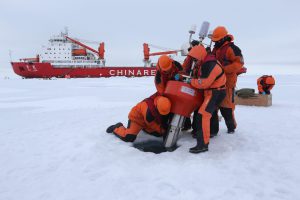
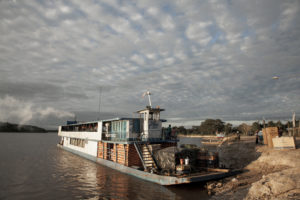

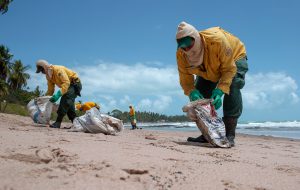

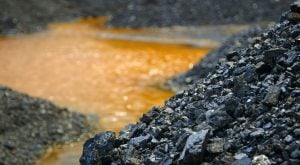
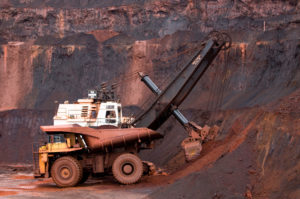
![A local in the Nubra Valley of Ladakh, looking towards the Korakoram mountain range, which hosts the Siachen Glacier [image by: Athar Parvaiz]](https://dialogue.earth/content/uploads/2019/12/A-local-in-Nobra-Valley-of-Ladakh-looks-towards-the-Korakoram-mountain-range-which-hosts-the-Siachen-Glacier-Photo__Athar-Parvaiz-300x199.jpg)